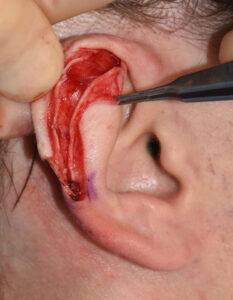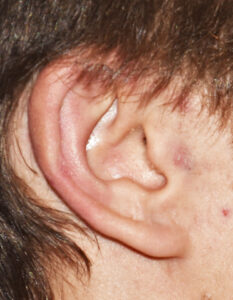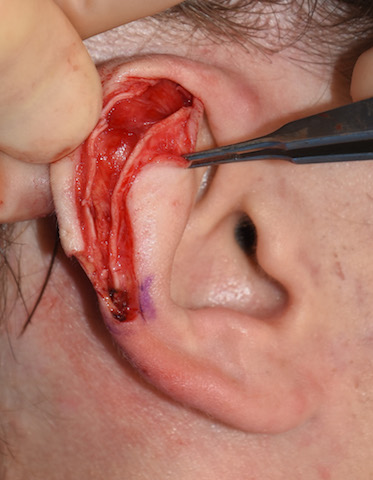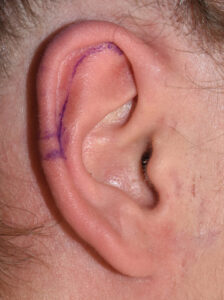Background: The appearance of the ear is primarily affected by the amount and shape of its cartilage component. Only the earlobe escapes this effect because it contains no cartilage. The most common shape abnormality of the ear is when it protrudes due to either an excessive conchal bowl, a weak or absent antihelical cartilage fold or some combination of both.
Another type of ear shape abnormality is an enlargement of its scapha region. This is a region of the ear in its upper third between the antihelical fold/superior crus and the helical rim. When it becomes enlarged the ear typically gets vertically longer. This would be ear heights that are typically greater than 65mms in a male and 60mms in female. Reduction of the scapha by excision and inferior flap rotation does make the ear vertically shorter but it also decreases the backward extension the upper third of the ear. In other words it also narrows the top part of the ear as well.
Case Study: This male was bothered by the vertical height and shape of his ears. He had normal middle and lower thirds of his ears but an enlarged scapha of the upper third.


Case Highlights:
1) The upper third of the ear can become elongated due to an enlarged scapha. This elongation is both in vertical height and width.
2) The scaphal flap ear reduction technique can reduce the shape of the upper third of the ear with minimal/invisible scarring
3) The height of the ear is reduced but it also becomes less wide int profile as well.
Dr. Barry Eppley
Indianapolis, Indiana





